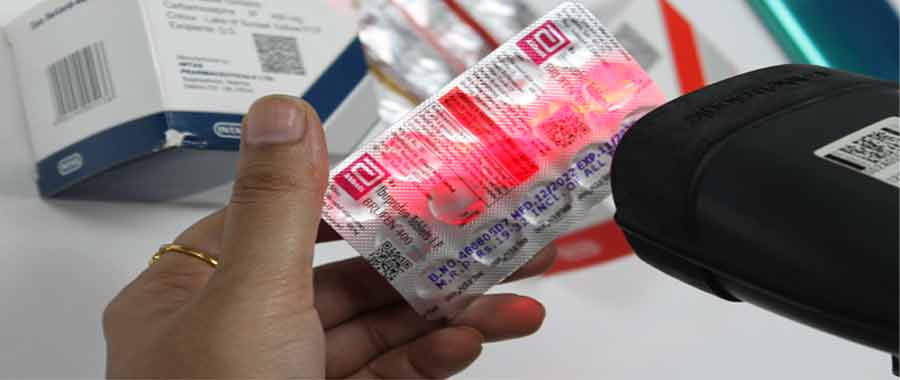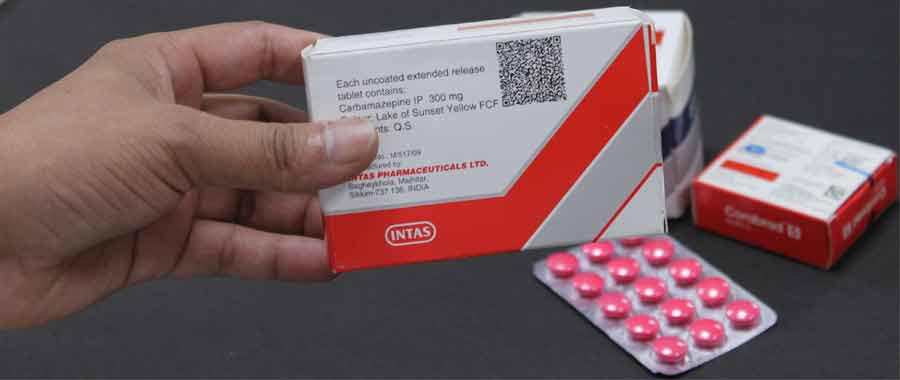Accuracy and Quality of the Barcode Information in Hospitals
In hospitals, accuracy and quality of the information encoded in barcodes is crucial to ensure patient safety and improve healthcare outcomes. Here are some ways hospitals can ensure the accuracy and quality of barcode information:

By implementing these strategies, hospitals can ensure that the information encoded in barcodes is accurate and of high quality, which can help improve patient safety and healthcare outcomes.
Download and Install
Healthcare Industry Barcode SoftwarePatient Privacy and Data Security using Barcode Systems in Hospitals
Hospitals have a responsibility to protect patient privacy and ensure data security when using barcode systems. Here are some ways they can do this:
-
01
Follow Privacy Laws
Hospitals should follow all applicable privacy laws and regulations, such as the Health Insurance Portability and Accountability Act (HIPAA) in the United States. This may involve implementing additional security measures, such as conducting regular security audits, to ensure compliance with these laws.
-
02
Train Staff
Hospitals should provide staff with training on how to use barcode systems securely and protect patient privacy. This may involve providing education on security best practices, such as how to create strong passwords, and ensuring that staff are aware of the potential risks associated with using barcode systems.
-
03
Use Secure Barcode Systems
Hospitals should use barcode systems that are designed to protect patient privacy and ensure data security. This may involve using encryption to protect data as it is transmitted between systems, or implementing other security measures to prevent unauthorized access.
-
04
Limit Access to Data
Hospitals should limit access to important patient data to those who need it to provide care to the patient. This may involve implementing user access controls through different methods like ID cards, face lock, and many other security measures to prevent the unauthorized access.
-
05
Use Secure Networks
Hospitals should ensure that their networks are secure and that they are using up-to-date security protocols, such as firewalls, unified threat management, VPN gateways, and intrusion detection systems.
-
06
Use Appropriate Data Storage Methods
Hospitals should ensure that patient data is stored in a secure manner, such as on encrypted hard drives or in secure cloud storage systems like DropBox, Google Drive, iCloud, etc.
Improvement of Workflow and Efficiency using Barcode Systems in Hospitals
Barcode systems have been shown to improve hospital workflow and efficiency in several ways. Here are some examples:
-
Patient Identification
Barcode systems can be used to scan patient wristbands, which enables healthcare providers to quickly and accurately retrieve a patient's medical history and identify the correct patient. This reduces the risk of errors, and improves patient safety.
-
Medication Administration
Barcode systems can be used to scan labels and match them with the patient's electronic health record, ensuring that the right medication is given to the right patient. This reduces errors, and streamlines the medication administration process.
-
Analytics
Barcode systems can provide hospitals with data and analytics on patient care, workflow, and efficiency. This information can be used to identify inefficiencies, optimize processes, accurate treatment, and improve overall hospital operations.
-
Lab Specimen Tracking
Barcode systems can be used to track lab specimens, reducing the risk of medical errors, improving patient safety, and streamlining the specimen tracking process. This can help ensure timely and accurate test results.
-
Inventory Management
Barcode systems can be used to track medical supplies, equipment, and medications, allowing the hospital staff to easily monitor inventory levels, reduce waste, and optimize purchasing and restocking.
-
Asset Management
Barcode systems can be used to track hospital equipments, medicines, and many other assets that reducing the risk of loss or theft of these items and streamlining the asset management process.
Overall, barcode systems are an essential tool for hospitals to improve workflow and efficiency. By using barcode systems to streamline patient identification, medication administration, inventory management, lab specimen tracking, asset management, and analytics, hospitals can reduce the risk of errors, improve patient safety, and enhance overall quality of care.
Improvement of Patient Safety and Care using Barcode System in Hospitals
Barcode systems are widely used in hospitals to improve patient safety and care by reducing medication errors, improving patient identification, streamlining workflows, and enhancing overall communication among healthcare professionals. Here are some specific ways barcode systems improve patient safety and care in hospitals:

-
Medication Administration
Barcode systems help ensure patients receive the correct medication at the right dose and time. Medications are labeled with barcodes containing information about the medication, dosage, and administration instructions. Healthcare professionals can scan the barcode at the point of care to confirm the medication order, reducing the risk of medication errors.
-
Patient Identification
Barcode systems help ensure correct patient identification by using barcode wristbands or ID cards that can be scanned to retrieve a patient's medical records and verify their identity. This helps avoid confusion or mix-ups between patients with similar names.
-
Laboratory Testing
Barcode systems are used to track laboratory specimens and ensure that the correct results are assigned to the correct patient. Specimens are labeled with barcodes containing information about the patient, specimen type, and tests ordered. Healthcare professionals can scan the barcode to ensure the correct tests are performed on the correct specimen.
-
Blood Transfusion
Barcode systems are used to ensure the correct blood product is given to the right patient during a blood transfusion. Blood products are labeled with barcodes containing information about the donor, product type, and expiration date. Healthcare professionals can scan the barcode to confirm the correct product is administered to the correct patient.
-
Medical Device Tracking
Barcode systems are used to track medical devices and ensure they are properly cleaned, maintained, and calibrated. Devices are labeled with barcodes containing information about the device type, location, and maintenance schedule. Healthcare professionals can scan the barcode to update maintenance records and ensure devices are functioning correctly.
Overall, barcode systems improve patient safety and care by reducing medication errors, ensuring proper patient identification, improving workflow efficiency, and enhancing communication among healthcare professionals. By using barcode systems, hospitals can minimize risks and errors, providing patients with safer and higher-quality care.